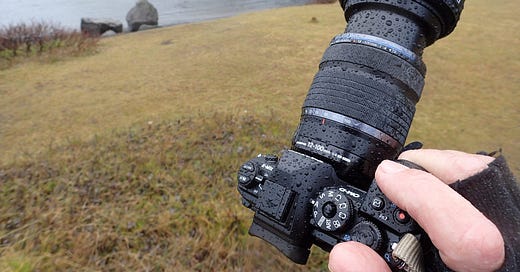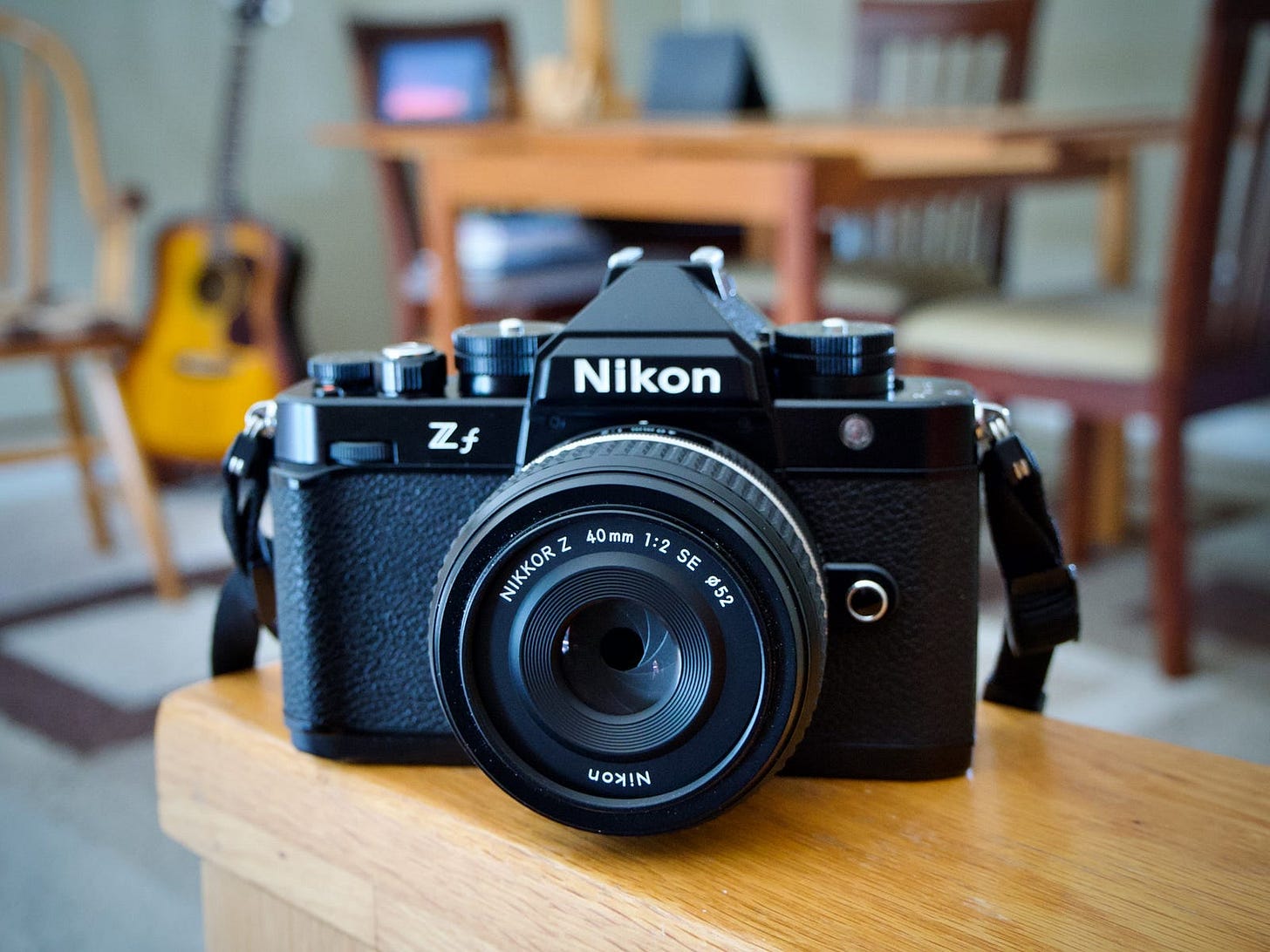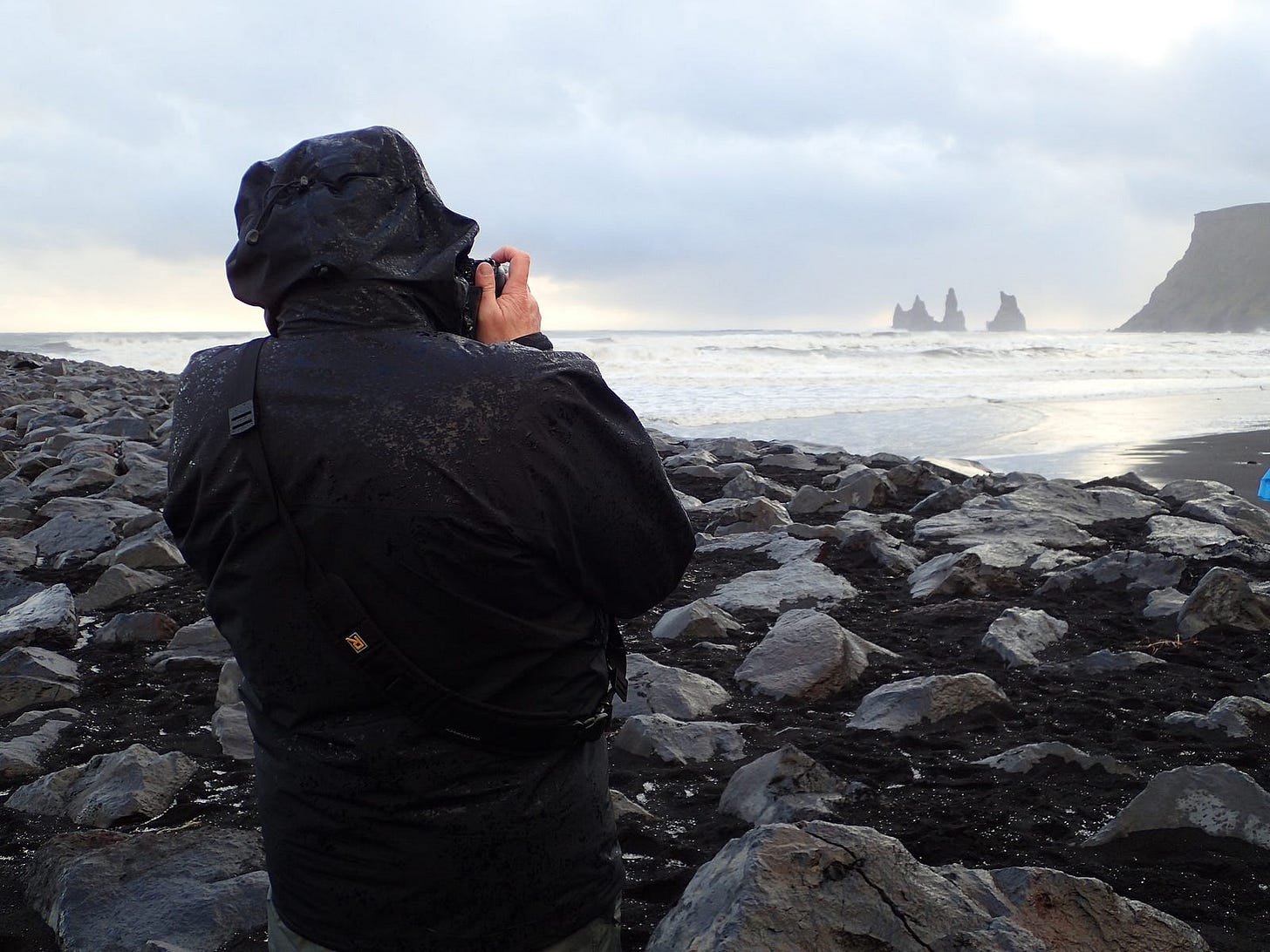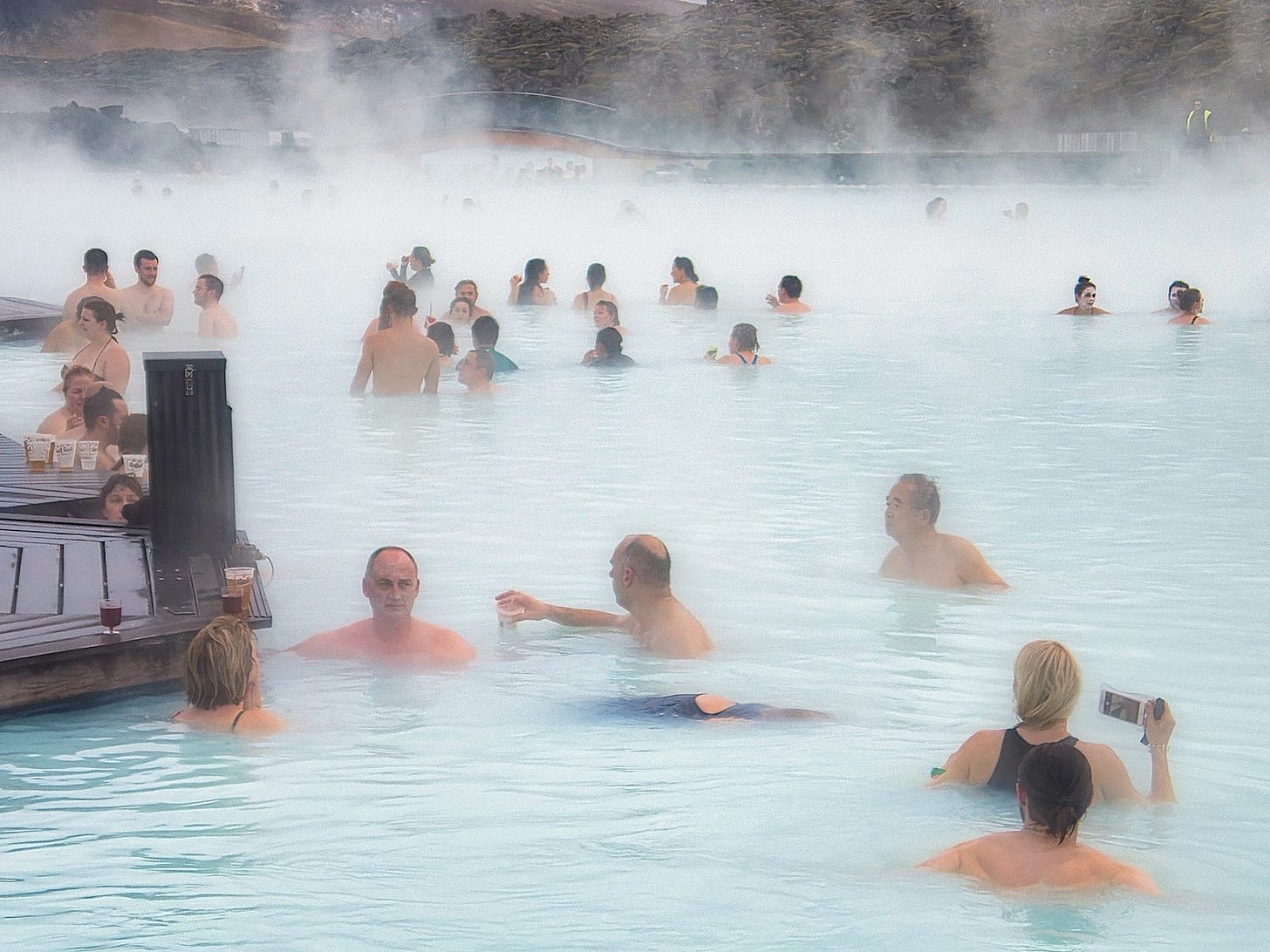Bears may hibernate in the winter, but photographers should not. Foul weather creates fantastic photo opportunities, as long as we make adjustments to accommodate the rain and snow.
Much in the same way stormy conditions require appropriate wardrobe, photo gear should also change with the seasons.
British author Alfred Wainwright said it best: “There’s no such thing as bad weather, only unsuitable clothing.” And I extend his wisdom to photography.
Every enthusiast photographer I know, myself included, has multiple camera options. Some kits are better for summer portraits, others for events and family gatherings. Each rig has its own season. Think T-shirts for summer and parkas for winter.
The best camera for winter may not be your prized state-of-the-art device. That’s OK. Digital cameras have been capable for a long time. You don’t need the latest and greatest in a rainstorm. But you do need weather sealing.
So if your forecast looks anything like mine (rain, rain, rain), then it’s time to visit your camera closet for a seasonal changeover.
What I’m Putting Away
My prized state-of-the-art camera is the Nikon Zf full-frame mirrorless. It does have some weather resistance, but my 40mm f/2.0 Nikkor Z, Viltrox 20mm f/2.8, and Nikkor 24–85mm f/3.5–4.5G ED VR lenses do not. The first rule of storm photography is that both lens and body need robust protection seals.
I also carry the super compact Fujifilm XF-10. Its lovely 28mm f/2.8 lens combined with an APS-C sensor is perfect for landscape photography… in the summer. I’m afraid that cute little guy wouldn’t last 5 minutes in a Sonoma County downpour.
I love them both and will reach for them when appropriate. But I do have more robust options for winter.
What I’m Switching to For Winter
Two camera brands that come to mind for outdoor adventure are Olympus (OM System) and Pentax. They’re not as popular as Canon, Nikon, and Sony, but they are tough, and they have great glass.
OM System OM-1 Mirrorless
The OM System OM-1 paired with the 12–40mm f/2.8 PRO II, 12–100mm f/4 PRO, and the 40–150mm f/2.8 PROzooms deliver great images regardless of the environment. Not all Olympus optics are weather-resistant. But the ones that have that designation are stout.
My ultimate test for Olympus durability was a few years ago on a late October trip to Iceland. It was cold (very cold!), windy, and wet. If I were to come home with any sort of photo catalog, I had to forget about protecting my equipment. Otherwise, that’s all that I’d be doing — wiping off gear and not taking pictures.
Once I got back in the car after a shoot, I would wrap everything in a towel and leave it out on the seat to dry. After one week of this environmental torture, the body and lenses were still performing as well as the day I arrived.
I also depend on this kit in the tropics. The next stop for the OM-1 will be Costa Rica in January. Warm rain is just as wet as cold rain.
Pentax KP DSLR
The other camera that I never worry about in bad weather is my Pentax KP DSLR. I’ve dropped it on frozen trails and slung it over my shoulder in pouring rain, and it’s still clicking away without a hitch. This is the case for every camera in the Pentax DSLR lineup.
My favorite all-weather lens is the 70–210mm f/4 ED SDM WR. Any Pentax lens with the WR designation is a beast outdoors. Plus, the 70–210mm features internal zooming and focusing. That means the lens barrel doesn’t extend. This single-body construction is easy to wipe down and doesn’t create anxiety in the field.
I often pair it with the Pentax HD DA 20–40mm f/2.8–4 WR zoom or the more compact 18–50mm f/4–5.6 WR. Again, great weather sealing combined with fabulous optics results in beautiful shots regardless of conditions.
Olympus Tough Compact Camera
The ultimate “don’t worry about the weather” compact camera is the Olympus Tough series. I’m still using the older TG-4. The current model is the TG-7.
Whether I’m snorkeling in Hawaii or relaxing in Iceland’s Blue Lagoon, this compact always gets the shot.
A Note About the Pentax and the Olympus Tough
My Pentax KP was released in January 2017. It has a 24-megapixel APS-C sensor, 5-axis image stabilization, 100 percent optical viewfinder coverage, and a 27-point AF sensor with 25 central cross-type points.
The Olympus TG-4 is even older, released in April 2015. It sports a 16-megapixel sensor and a 1/2.3" sensor.
Just like a pair of old jeans that may have faded a bit, but still feel great, these two cameras are very serviceable today. And thanks to great strides in post-processing software, I can use AI adjustments to upsample resolution and eliminate noise.
Modern software extends the life of our photography hardware, and both of these cameras are perfect examples of that.
Tips for Working Outdoors
Regardless of how good your gear is, there are things you can do to maximize its performance.
For lenses, I always attach a high-quality protection filter on the front element. The main reason I do this is so I can use any soft cloth or my T-shirt to wipe off the glass in stormy conditions.
Since it’s a filter and not the front element of my lens, I don’t have to be overly meticulous about cleaning the surface. Microfiber cloths are not very absorbent. And if that’s all you have to use in a storm, it’s going to be a long day.
I also pack soft cloths to wipe down the lenses and camera bodies. I’ve learned over the years to have at least three on hand. You can dry them back at the room each night.
Extra batteries and a battery grip extend your run time during long shoots. Grips are nice because you can usually double up your batteries, and they tend to be easier to access when changing in cold weather. Keep your extra cells warm, in a jacket pocket, so they’re ready to go when you need them.
Shower caps come in handy in pelting rain. They easily pull over your camera and can help extend the life of your drying cloths because you’re not using them as often. I usually have a one-gallon Ziploc bag too.
And finally, I recommend two camera bodies so you don’t have to change lenses in the field. You can keep a short-to-midrange zoom on one body, and your long telephoto on the other. The last thing you want is a wind gust blowing debris into the camera body while changing lenses. Save that task for inside the car.
Final Thoughts
Good camera equipment designed for outdoor photography will serve you well regardless of the conditions you’re working in. Don’t let concerns about your gear keep you inside during the winter months. Some of your best pictures may be captured during the worst weather.
Author Notes
Photos of Iceland, Oregon Coast, and Convict Lake captured by Derrick Story. The image of me holding a camera in a plastic bag was taken by a random stranger in Iceland (thank you!) with my TG-4. The snorkeling gear image was recorded in Maui by me before a swim. As for the product shots, some are by me and some are from the manufacturer.
I used affiliate links for the products in this article. Any revenue resulting from purchases from those links helps support my research and writing.














Great tips and tricks for dealing with “bad” weather!
As an aside, as someone who lives in Norway, I’ll put it out there that Norwegians say “There’s no such thing as bad weather, only unsuitable clothing” even better than Alfred Wainwright, as their saying rhymes: Ingen dårlig vær, bare dårlig klær. 😄🌧️
Send some of the rain down here to Southern California. 0.2 inch for the season. Or move down here (your mother might like that) and use all your geat.
Thanks for the article. I'm using an OM-1, so I'm all set if we ever get rain.